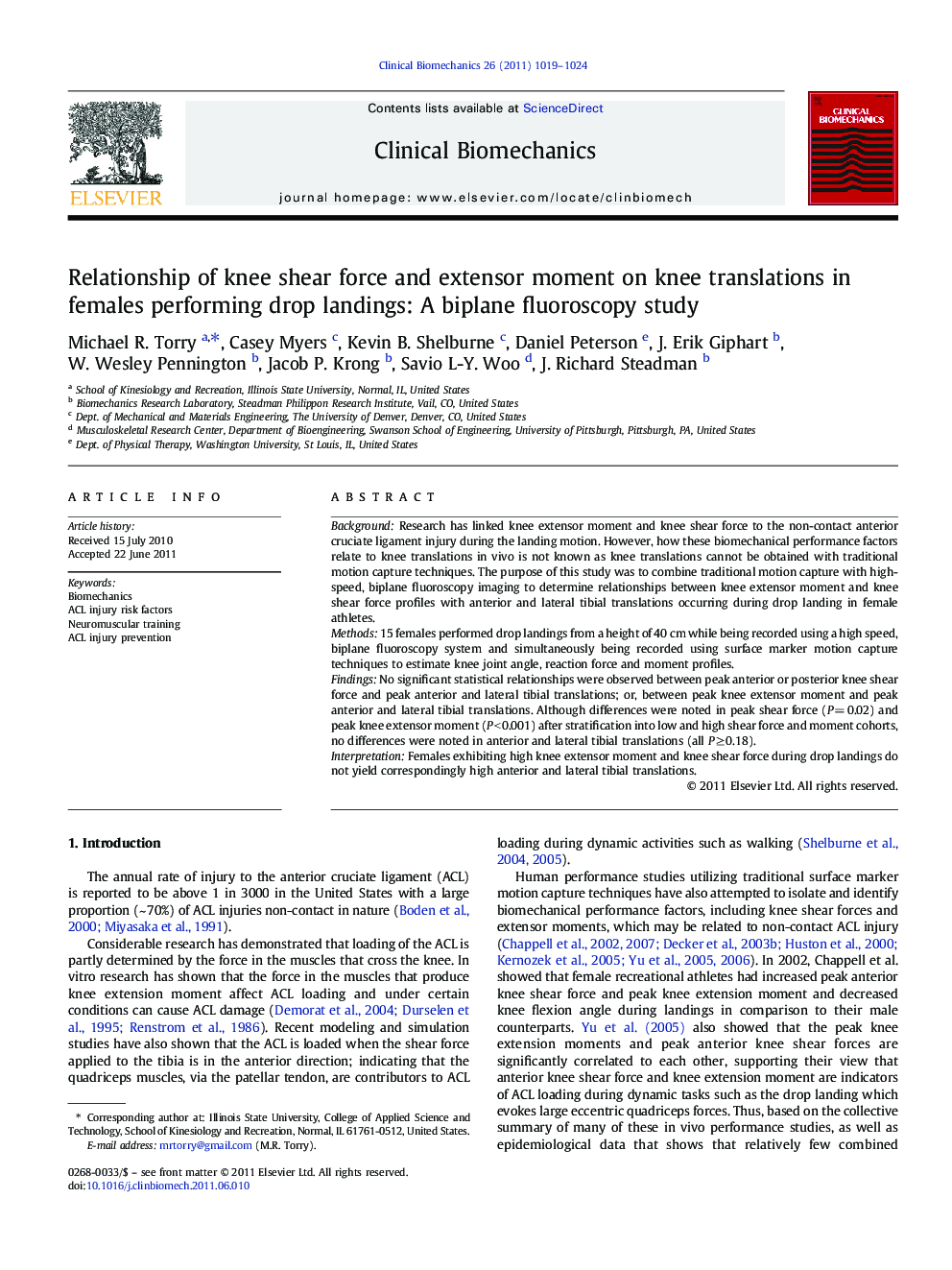| Article ID | Journal | Published Year | Pages | File Type |
|---|---|---|---|---|
| 4050538 | Clinical Biomechanics | 2011 | 6 Pages |
BackgroundResearch has linked knee extensor moment and knee shear force to the non-contact anterior cruciate ligament injury during the landing motion. However, how these biomechanical performance factors relate to knee translations in vivo is not known as knee translations cannot be obtained with traditional motion capture techniques. The purpose of this study was to combine traditional motion capture with high-speed, biplane fluoroscopy imaging to determine relationships between knee extensor moment and knee shear force profiles with anterior and lateral tibial translations occurring during drop landing in female athletes.Methods15 females performed drop landings from a height of 40 cm while being recorded using a high speed, biplane fluoroscopy system and simultaneously being recorded using surface marker motion capture techniques to estimate knee joint angle, reaction force and moment profiles.FindingsNo significant statistical relationships were observed between peak anterior or posterior knee shear force and peak anterior and lateral tibial translations; or, between peak knee extensor moment and peak anterior and lateral tibial translations. Although differences were noted in peak shear force (P = 0.02) and peak knee extensor moment (P < 0.001) after stratification into low and high shear force and moment cohorts, no differences were noted in anterior and lateral tibial translations (all P ≥ 0.18).InterpretationFemales exhibiting high knee extensor moment and knee shear force during drop landings do not yield correspondingly high anterior and lateral tibial translations.
